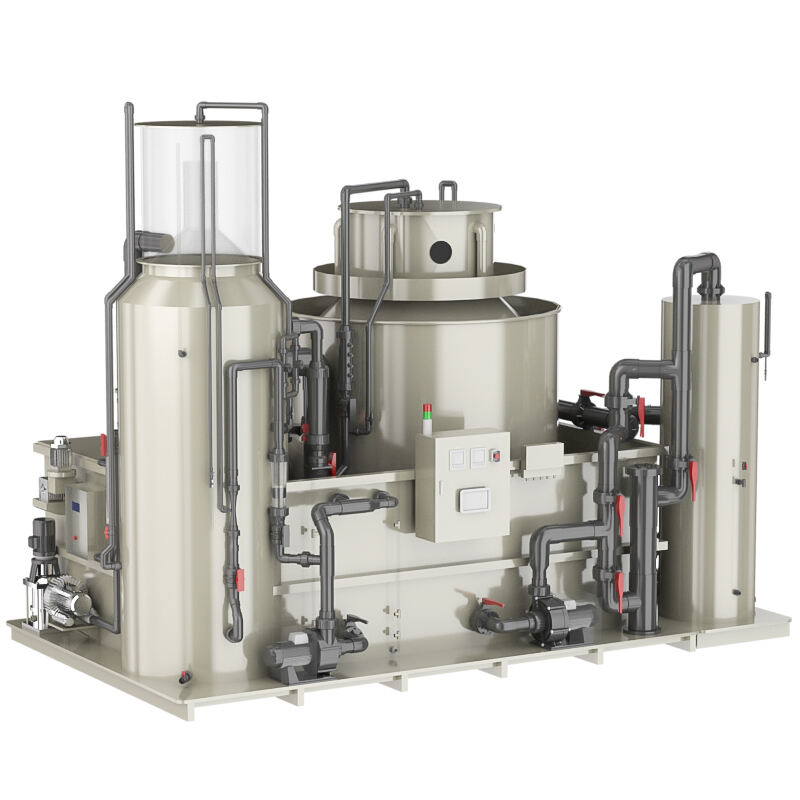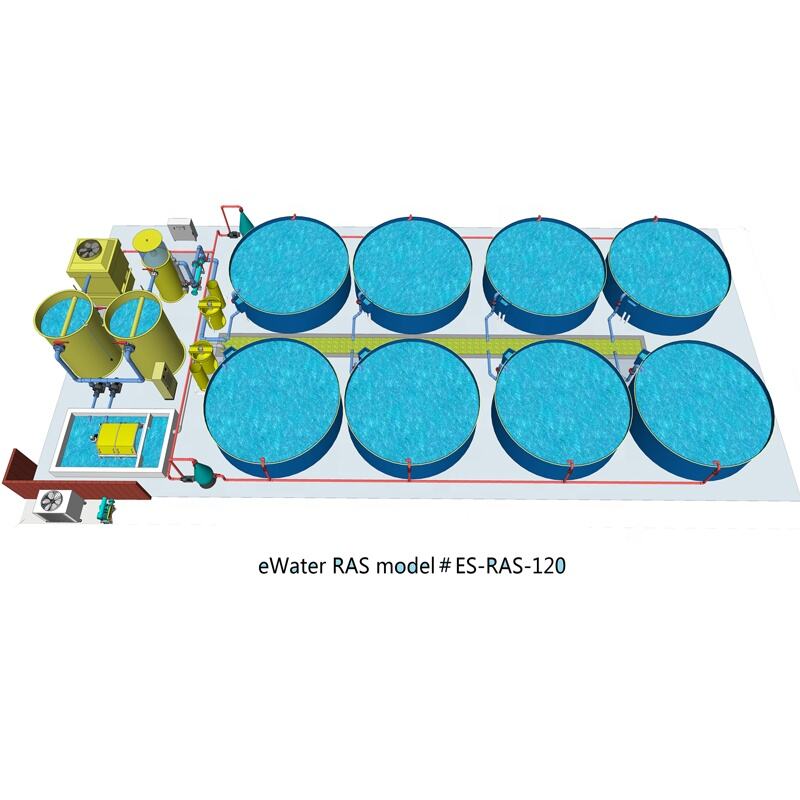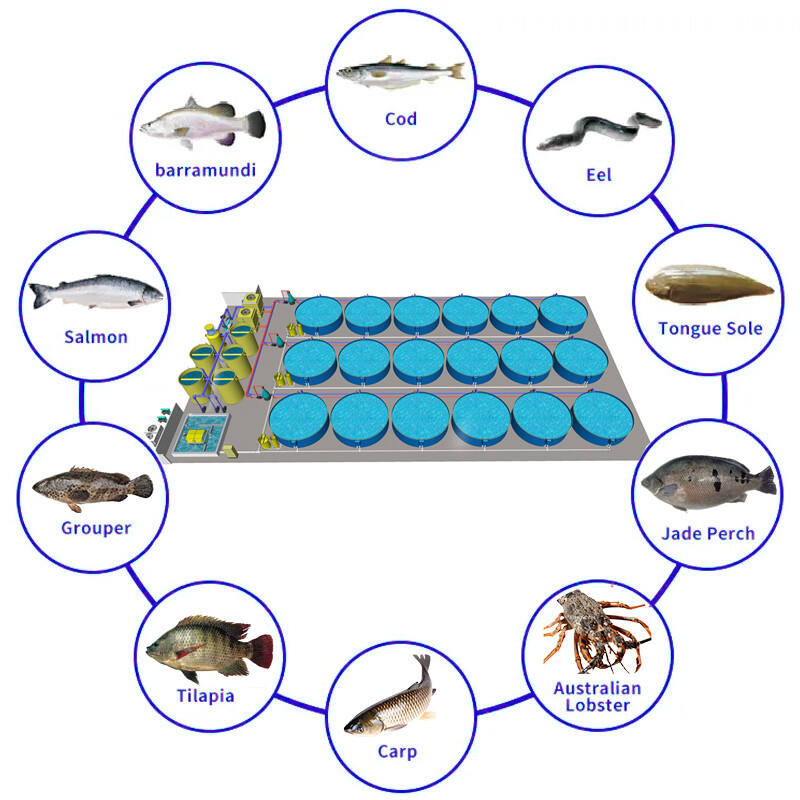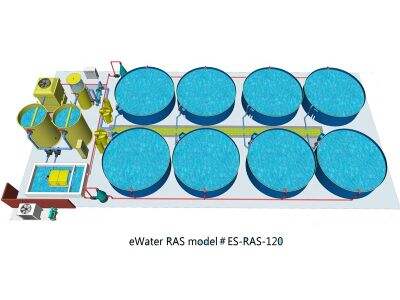Badanie korzyści wynikających z zastosowania systemów recyklingowych w hodowli ryb
Hodowla ryb jest kluczowym sposobem zapewnienia ludziom źródła trwałości. Jednakże, tradycyjne metody hodowli ryb mogą mieć negatywny wpływ na środowisko, takie jak zanieczyszczenie wód i wybuchy chorób. Aby odpowiedzieć na te troski, systemy recyklingowe wody (RAS) zostały opracowane jako innowacyjna i trwała technika hodowli ryb.
Przewagi RAS

Systemy recyklacji akwakultury mają kilka przewag nad tradycyjnymi metodami hodowli ryb. Po pierwsze, systemy recyklingowe akwakultury RAS umożliwia wychowywanie ryb w środowisku kontrolowanym, wolnym od naturalnych drapieżników, zapewniając wyższy poziom bezpieczeństwa. Po drugie, ponieważ woda jest oczyszczana i recyklowana, RAS może oszczędzać wodę i zmniejszać zanieczyszczenia. Po trzecie, RAS może być używany do wychowywania ryb na mniejszym obszarze, czyniąc to bardziej dostępne dla osób mieszkających w obszarach miejskich. Na koniec, wychowywanie ryb w środowisku kontrolowanym pozwala RAS produkować wysokiej jakości produkty rybne, które są spójne pod względem rozmiaru, kształtu i konsystencji.
Innowacja w hodowli ryb
Systemy recyklingowe akwakultury to innowacja w zrównoważonej hodowli ryb. RAS oferuje bardziej kontrolowane i stabilne środowisko dla ryb, co prowadzi do szybszych i lepszych temp wzrostu oraz poprawionej jakości filetów. System działa przez filtrowanie i ponowne użycie wody, redukując ilość wody potrzebną do produkcji ryb.
Bezpieczeństwo RAS
Wyprowadzanie ryb może wiązać się z niektórymi zagrożeniami, takimi jak zanieczyszczenie wody, wybuchy chorób i obecność drapieżników. Jednakże użycie RAS w hodowli ryb może zmniejszyć te ryzyka. Kontrolowane środowisko RAS eliminuje obecność naturalnych drapieżników, co sprawia, że jest bezpieczniej dla ryb. Ponadto, Trwałe hodowli ryb a system recyklingowy wody zapewnia ciągłe oczyszczanie wody i jej wolność od zanieczyszczeń, co tworzy warunki bezpieczne dla wzrostu ryb.
Jak używać RAS?

Systemy akwakultury recyklingowej mogą być stosowane w różnych warunkach hodowli ryb, w tym w zakładach wewnętrznych i zewnętrznych oraz w ogrodowych stawach rybnych. producentów sprzętu rolnictwa kołowego system działa poprzez filtrowanie i ponowne użycie tej samej oczyszczonej wody w celu kontrolowania jakości wody. Hodowla ryb za pomocą RAS wymaga wysokiego poziomu wiedzy i zrozumienia systemu.
Jakość obsługi RAS

Systemy akwakultury z recyklingiem mogą oferować znaną wysokość jakości hodowlanym rybom. Hodowcy korzystający z RAS mają możliwość produkcji wysokiej jakości ryb, które są spójne pod względem rozmiaru, kształtu i konsystencji. Dzięki kontrolowanemu środowisku, farmerzy mogą kontrolować zachowanie ryb, optymalizować użycie karmy oraz śledzić wzrost swoich ryb w czasie. Ponadto, RAS może pomóc farmerom oszczędzać wodę i obniżać koszty eksploatacji, prowadząc do bardziej efektywnej i przydającej się hodowli ryb.
Zastosowania RAS
Systemy akwakultury z recyklingiem mają szeroki zakres zastosowań w hodowli ryb, w tym wychowywanie roślin ozdobnych oraz jadalnych gatunków ryb. Farmerzy mogą używać RAS do hodowli ryb takich jak tilapia, łosoś i pstrąg. Ponadto, RAS może być również stosowany do hodowli krewetek i karpi. Dzięki swojemu potencjałowi do redukcji zużycia wody i zanieczyszczeń, RAS jest również doskonałą metodą zrównoważonej produkcji akwakultury.

 EN
EN
 AR
AR
 BG
BG
 HR
HR
 CS
CS
 DA
DA
 NL
NL
 FI
FI
 FR
FR
 DE
DE
 EL
EL
 HI
HI
 IT
IT
 JA
JA
 KO
KO
 NO
NO
 PL
PL
 PT
PT
 RO
RO
 RU
RU
 ES
ES
 SV
SV
 TL
TL
 IW
IW
 ID
ID
 SR
SR
 UK
UK
 VI
VI
 HU
HU
 TH
TH
 TR
TR
 AF
AF
 BN
BN
 LO
LO
 LA
LA
 MY
MY
 UZ
UZ

